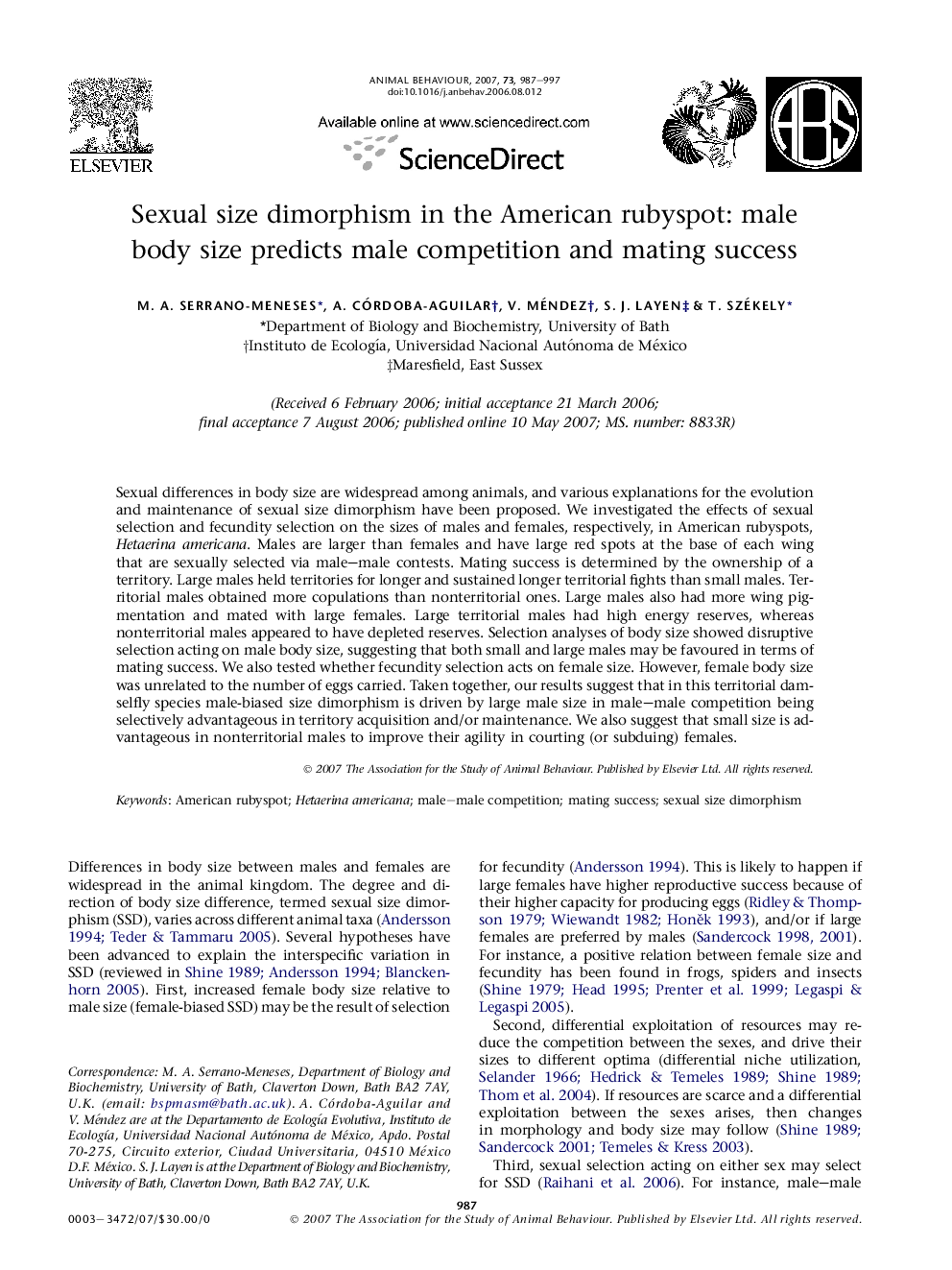| کد مقاله | کد نشریه | سال انتشار | مقاله انگلیسی | نسخه تمام متن |
|---|---|---|---|---|
| 2418194 | 1104340 | 2007 | 11 صفحه PDF | دانلود رایگان |

Sexual differences in body size are widespread among animals, and various explanations for the evolution and maintenance of sexual size dimorphism have been proposed. We investigated the effects of sexual selection and fecundity selection on the sizes of males and females, respectively, in American rubyspots, Hetaerina americana. Males are larger than females and have large red spots at the base of each wing that are sexually selected via male–male contests. Mating success is determined by the ownership of a territory. Large males held territories for longer and sustained longer territorial fights than small males. Territorial males obtained more copulations than nonterritorial ones. Large males also had more wing pigmentation and mated with large females. Large territorial males had high energy reserves, whereas nonterritorial males appeared to have depleted reserves. Selection analyses of body size showed disruptive selection acting on male body size, suggesting that both small and large males may be favoured in terms of mating success. We also tested whether fecundity selection acts on female size. However, female body size was unrelated to the number of eggs carried. Taken together, our results suggest that in this territorial damselfly species male-biased size dimorphism is driven by large male size in male–male competition being selectively advantageous in territory acquisition and/or maintenance. We also suggest that small size is advantageous in nonterritorial males to improve their agility in courting (or subduing) females.
Journal: Animal Behaviour - Volume 73, Issue 6, June 2007, Pages 987–997